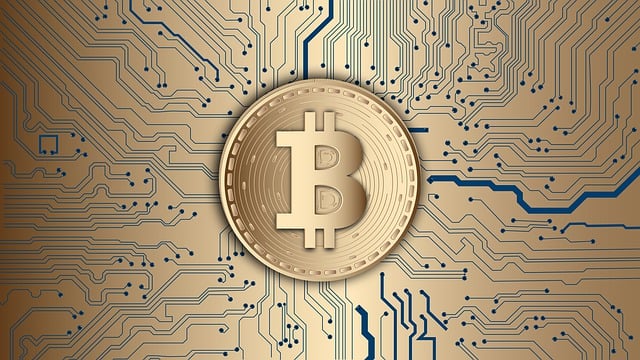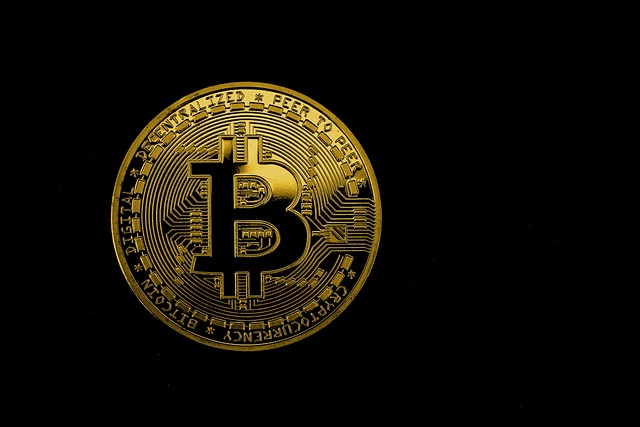In the fast-growing world of decentralized finance (DeFi), understanding 'default' goes beyond traditional loan repayment failure. It involves smart contracts and automated processes governing lending/borrowing protocols on top DeFi platforms like Aave and Compound, which employ strategies like automated liquidations for risk management. Users, after providing liquidity, agree to predefined rules including penalties for market volatility or protocol changes. By understanding these mechanisms, users can make informed decisions, enhancing their experience in this innovative financial landscape dominated by top DeFi platforms. Preventing defaults is crucial for the sustainability and reliability of these platforms as they evolve, with best practices like diversification, staying informed, and setting stop-loss orders safeguarding investments.
“Discover the profound impact of ‘default’ in the dynamic realm of Decentralized Finance (DeFi). This article unravels the intricate concept, exploring how it functions as a cornerstone in DeFi’s architecture. We shine a spotlight on top DeFi platforms and their unique default mechanisms, analyzing both risks and implications. Furthermore, it delves into best practices for users to prevent and mitigate defaults, ensuring informed decision-making in this evolving landscape.”
- Understanding the Concept of 'Default' in DeFi
- Top DeFi Platforms and Their Default Mechanisms
- Risks and Implications of Defaults in Decentralized Finance
- Preventing and Mitigating Defaults: Best Practices for DeFi Users
Understanding the Concept of 'Default' in DeFi

In the dynamic world of decentralized finance (DeFi), understanding the concept of ‘default’ is crucial. Unlike traditional financial systems where default refers to a borrower’s failure to repay a loan, in DeFi, it takes on a different context. Here, default often relates to smart contracts and automated processes that govern lending and borrowing protocols. When users provide liquidity to top DeFi platforms, they agree to predefined rules, including potential penalties or consequences in case of certain events, such as market volatility or unexpected protocol changes.
The notion of default in DeFi is designed to maintain the stability and integrity of these peer-to-peer financial networks. By programming smart contracts with mechanisms to handle defaults, top DeFi platforms aim to protect both lenders and borrowers. This includes strategies like automated liquidations, where collateralized debts are seized and sold to cover outstanding loans, ensuring that the risk is managed efficiently. Understanding these processes empowers users to make informed decisions when interacting with DeFi protocols, enhancing their overall experience in this innovative financial landscape.
Top DeFi Platforms and Their Default Mechanisms

The world of Decentralized Finance (DeFi) has seen remarkable growth, and among its key components are top DeFi platforms that offer a range of services from lending to trading. However, understanding their default mechanisms is crucial for users navigating this evolving landscape. Platforms like Aave and Compound, two prominent names in the DeFi space, have implemented sophisticated systems to manage defaults.
Aave, for instance, employs an automated process where borrowers are required to maintain a certain collateral ratio. If a borrower’s assets fall below this threshold, the platform triggers a liquidation process, selling off part of the borrower’s collateral to cover the outstanding debt. Compound, on the other hand, utilizes a similar approach, but with a focus on market-driven pricing, ensuring that borrowers’ collateral is always valued accurately. These mechanisms aim to minimize losses and protect both borrowers and lenders within the DeFi ecosystem.
Risks and Implications of Defaults in Decentralized Finance

In the realm of decentralized finance (DeFi), defaults pose unique risks and implications, especially as these systems are largely based on smart contracts and peer-to-peer interactions. When a borrower fails to repay their loan in the DeFi ecosystem, it can have far-reaching consequences. Unlike traditional financial institutions, top DeFi platforms often lack centralized risk management, making them vulnerable to systemic failures. Defaults can lead to a loss of trust among users, as collateral may be at stake, and the entire platform could face liquidity issues or even collapse.
The implications extend to market stability and investor confidence. A significant default on a popular DeFi platform could trigger a ripple effect, affecting other interconnected protocols and potentially causing widespread panic. As these systems grow in complexity and size, ensuring robust risk management and default resolution mechanisms becomes increasingly critical. This is an area that requires careful consideration and innovation to ensure the long-term sustainability and reliability of top DeFi platforms.
Preventing and Mitigating Defaults: Best Practices for DeFi Users

Preventing and mitigating defaults is a crucial aspect of navigating the decentralized finance (DeFi) landscape, especially as the space continues to evolve rapidly. DeFi users can take several proactive steps to safeguard their investments. Firstly, diversifying one’s portfolio across various top DeFi platforms can reduce risk; no single protocol should dominate your investment strategy. Secondly, staying informed about smart contract audits and security updates from these platforms is essential, as vulnerabilities could lead to significant losses. Regularly checking for protocol changes and new security measures implemented by the leading DeFi platforms can help users stay one step ahead of potential risks. Additionally, adhering to best practices like setting stop-loss orders and only investing what you can afford to lose can mitigate the impact of defaults.
Another effective strategy is to participate in community discussions and keep up with news related to DeFi platforms. Many top DeFi projects have active communities that share insights on potential risks and rewards. By engaging in these conversations, users can gain a deeper understanding of the protocols they interact with, enabling them to make more informed decisions. Furthermore, utilizing tools for risk assessment and keeping an eye on market trends can provide valuable signals about a protocol’s stability and future prospects, thereby helping to avoid defaults.
In exploring the intricate world of Decentralized Finance (DeFi), understanding defaults is paramount. By analyzing top DeFi platforms and their unique default mechanisms, we uncover both risks and opportunities. Recognizing the potential for significant financial implications, this article has provided insights into best practices for users to prevent and mitigate defaults. Embracing these strategies can foster a more robust and secure DeFi ecosystem, enabling users to navigate this dynamic landscape with confidence. Among the top DeFi platforms, those that prioritize transparent default management are poised to become industry leaders, shaping a future where financial resilience meets technological innovation.
